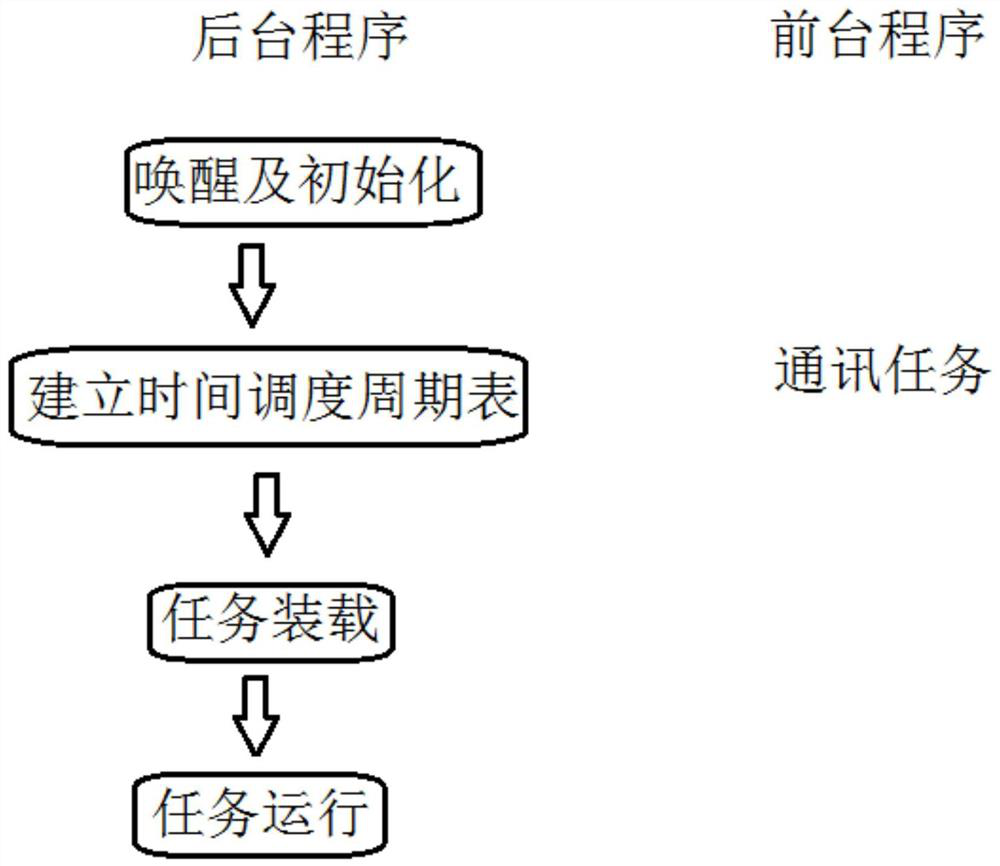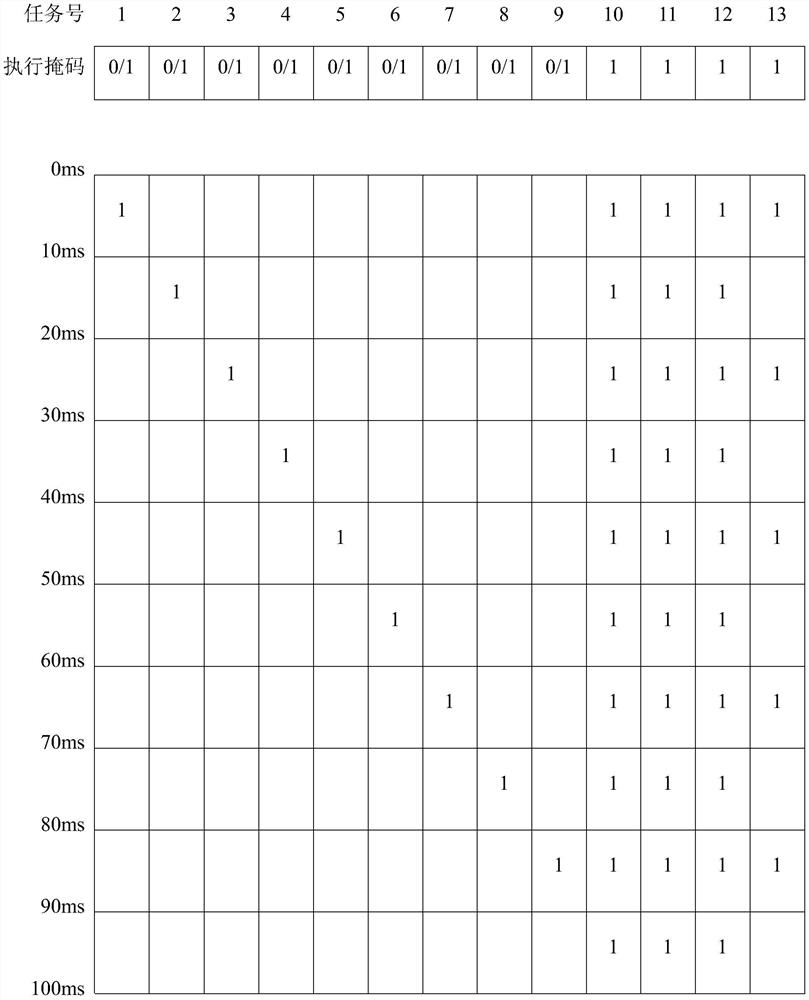Method for running multiple task sequences in parallel
A multi-task and sequence technology, applied in the field of computing multi-task, can solve problems such as large memory consumption, long real-time response time, random events are easy to burst, etc., to reduce operating resources, system stability, and good time predictability Effect
- Summary
- Abstract
- Description
- Claims
- Application Information
AI Technical Summary
Problems solved by technology
Method used
Image
Examples
Embodiment 1
[0029] Such as figure 1 According to the flowchart, the present invention provides a method for parallel operation of multi-task sequences, including a foreground program and a background program, wherein the specific steps of the background program are as follows:
[0030] 1) To wake up the device by inputting instructions through the power-on standby button, initialize the memory and peripherals, the specific process is as follows: initialize the SPI_FLASH storage and device parameters, control the power-on of other modules of the device, self-check the device, activate the Bluetooth 4.0 communication module and cycle Send the device status, read SPI_FLASH to store the boot detection sequence, control the multi-task module to carry out the boot detection sequence through the microprocessor, the boot detection sequence includes the following detection process: double OLED light group display eye shape, RGB full-color LED lights, distance measurement The mechanism performs dis...
PUM
 Login to View More
Login to View More Abstract
Description
Claims
Application Information
 Login to View More
Login to View More - R&D
- Intellectual Property
- Life Sciences
- Materials
- Tech Scout
- Unparalleled Data Quality
- Higher Quality Content
- 60% Fewer Hallucinations
Browse by: Latest US Patents, China's latest patents, Technical Efficacy Thesaurus, Application Domain, Technology Topic, Popular Technical Reports.
© 2025 PatSnap. All rights reserved.Legal|Privacy policy|Modern Slavery Act Transparency Statement|Sitemap|About US| Contact US: help@patsnap.com


